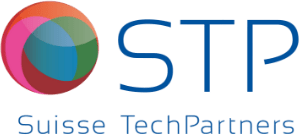0 7 min
- 1. Introduction of ELTIF 2.0 The European Union has adopted on April 9th 2023 the new European Long Term Investment Fund (ELTIF) 2 regulation and it will come into force on January 20th 2024 to replace the ELTIF 1 regulation dated June 8th 2015. At SuisseTechPartners we have prepared our application PMplus® to support thecritical operational needs of Hybrid Funds including those within the ELTIF 2 regime..
- 2. Evolution of ELTIF 2.0 Regulations According to Industry experts, ELTIF 2 is a positive evolution on several key aspects when compared to
- a. At eligible assets level
- The minimum threshold for real assets (10 millions) has been removed
- The definition of real assets now includes housing, intellectual property and infrastructure.
- The threshold for listed assets has been raised from 500 million to 1.5 billions
- ELTIF 2 Funds can invest into non-financial holdings
- ELTIF 2 Funds can invest into securitized assets and green bonds under EU regulation
- b. At portfolio composition level as it softens some investment limits
- The eligible assets threshold is down from 70% to 55%
- c. At the fund structure level as it authorizes the limit ratio for a single line of asset is now 20%
- UCITS and EU AIF managed by EU AIFM
- Open ended funds and closed ended funds can be traded on secondary markets
- Funds of Funds and Master feeder funds
- d. At the end investor level to create specific rules for Private Investors and to favor direct
distribution
- Differentiation of investment rules between Professional and Private Investors
- Remove of the requirement for Investment advice
- Distribution subject to MIFID 2 regulation vs the stronger rules of ELTIF 1
- Automatic passport for distribution across the EU
- e. At the ESG level
- No specific classification has been set at this stage and this should be reviewed in 2026
- f. At the fund liquidity level
- Set the NAV frequency limit at a quarterly NAV maximum
- Force Portfolio Managers to perform regularly liquidity stress tests
- Set rules regarding lock up periods, gates and side pockets for illiquid assets
- 3. The foreseeable impacts of ELTIF 2.0 on for the Asset Management Industry Recent publications and lectures indicate that these modifications are perceived positively by the market in general and Fund Managers are on their marks to launch new ELTIF funds as we speak since ELTIF 2 will be live soon. To ensure a smooth transition from ELTIF 1 to ELTIF 2, the funds created before January 10th 2024 will have to adapt to the regulation by January 11 th 2029 with two sub rules for an existing ELTIFs
- i. The fund can opt right away for the new regulation by notifying the regulator
- ii. If the fund has no intention to raise additional money then it must switch regulation right away
- 4. ELTIF 2.0 Operation Challenges The value chain of the Asset Management industry has so far been organized in two main separate streams i.e. the one for the UCITS and the one for the AIF given the fact that the underlying assets, the volumes, the actors and the platforms were in most cases specific to each segment. Over the past years, each part of the industry has focused on the implementation of the regulatory tsunami, cost reduction and digitization. However, the additional Alpha that Real Assets could provide while Interest rates where negative has increased the demand for Hybrid Funds. ELTIF 2 regulation should be an additional factor to push for the implementation of hybrid operating models to cope with these new challenges which will appear at different levels. The list here below gives a high level view of the needs for the Asset Management and the Asset Servicing industries to prepare for ELTIF 2 and define an operating model able to cope with these new operational challenges.
- a. At the asset level, several specific capacities will be required
- Invest and monitor all asset classes including private assets, listed assets and OTC derivatives
- Price efficiently these asset classes using the most efficient channel / process for each assetclass
- Predict and monitor cash flows efficiently
- Perform regularly liquidity stress tests to ensure a smooth functioning of the fund
- b. At the liability level the asset servicer or the asset manager will phase the need to
- Handle different kind of close or open ended funds, funds of funds, master feeders, gates or side pockets;
- Cope with the specific taxation rules of each distribution market at the investor level
- Adapt the client onboarding process to tackle much bigger volumes, much smaller ticket size, complex KYC review follow up of distributors / nominee structures which are today processes more standardized at UCITS level.
- Deliver adequate end investor and regulatory reporting to provide expected information
- 5. ELTIF 2.0 impacts on Depositories/Banks The EU regulator has made a strong choice by deciding that only Banks can act as Depositary of ELTIF 2 funds. This decision aims at offering an optimal protection to the end investors and this decision does exclude de facto Asset Servicers who are specialized in supporting PE Funds but who do not have a Banking License. As a consequence, the entities supporting ELTIF 2 funds should be mostly specialized Banks who will have to implement a hybrid model mixing some aspects of the standard UCITs model with some key elements of the “standard” PE model, while integrating the capacity to handle volumes. This could be significant at end investor level if ELTIF2 funds become a credible solution for pensions of coming generations. Additionally, Depositary banks do have their own operating model to perform their oversight duty. In most cases Depositary Banks / Trustees were relying on output of controls performed by the other actors of the value chain (Fund Administrator, Transfer Agent, Custodian,..etc.). This approach is no longer / less and less accepted by regulators who expect that Depositary Banks / trustees will performs independent controls on their side such as cash flow monitoring, verification of asset ownership or control of payable /receivable. In anticipation of this we have built extensive cash monitoring controls into PMplus.
- 6. The potential solutions on ELTIF 2.0 for Asset Services The obligation of implementing a new operating model to support the hybrid structure will not be an easy task for most current operating environments for the following reasons
- a. At Front Office level most platforms are designed to handle either Private Assets or Listed + OTC assets and very rarely all together in one platform
- b. Fund accounting platforms and TA platforms are specialized to handle either mainstream funds or private assets funds
- c. Existing IT architectures have been elaborated progressively with platforms software covering a limited number of specific functions and are hardly connected together with a powerful and consistent data model, workflow processing and a consistent data model.
- (i) Option 1: Upgrade one platform to cover hybrid funds Upgrade one of the legacy platforms used for fund administration in order to cope with all instruments used by a Hybrid Fund and the different types of fund structures. This is the approach taken by significant software vendors with the limitation that the processing of some PE instruments / processes remains very complex and spreadsheet bases even for the specialized firms Hence the objective to have a single platform will remain complex, costly and medium term at best in order to make sure to monitor all data needed per type of instrument to invest, monitor and report consistently to investors and regulators.
- (ii) Option 2: Feed the master FA platform with data coming from the FA slave / sub platforms This is a complex approach to follow as most of the assets will be private assets with their own specificities and the type of fund structure might be more like the one found in the UCITS world. This solution could seems simpler on paper but the difficulty is the capacity to transfer adequate / accurate data at the right level of details to ensure the consistency for the NAV calculation and the subsequent reporting provide to all interested parties. Existing FA platforms dedicated to UCITS or PE structures will struggle when positioned as the ‘Master position’ versus other systems acting as ‘Slave platform’.
- (iii) Option 3: implement a new platform dedicated to hybrid funds The recent evolution of technology favors the emergence of some new solutions with a flexible data model and the adequate agility to develop a modern and integrated solution. These solutions hardly compete yet with the existing leading platforms. It would then be a cost / risk arbitrage to opt for a newly built or planned platform versus implementing a proven solution or sticking with the steady upgrade of an existing solution.
- 7. SuisseTechPartners’ ELTIF 2.0 At SuisseTechPartners, we have been working for a few years on the complexity of accounting for and consolidating all types of assets using our comprehensive solution PMplus. In the world of Family Offices and Wealth Managers it is a standard need and we think that our IBOR purely based on accounting rules will be a massive plus to support some of the operational needs of Hybrid Funds including ELTIF2 funds. We would be delighted to share our experience and expertise in the domain and discuss the way our platform PMplus could potentially solve some of your needs going forward.
Over the last eight years the success of ELTIFS has been rather limited with the creation of only 83 fundsacross Europe including 59 funds in Luxembourg. Luxembourg is already perceived as the reference cross border market but the overall development has not been as successful as anticipated.
One of the main factors to explain that situation is that the Asset Management Industry has consistently argued about the lack of flexibility of the ELTIF 1.0 regulation (ELTIF1) and subsequently that it could hardly design the adequate product for a direct distribution to Private Investors.
On the other end, it is globally agreed that EU residents will have to self-fund their pension in the long run. At the same time, Politicians see pension funds as a key vehicle to finance the green economy and cope with the sustainable objectives.
This view is shared in the UK as well since the FCA has created in March 2021 a new regulatory regime for the open ended LTAF funds.
ELTIF 1 :




